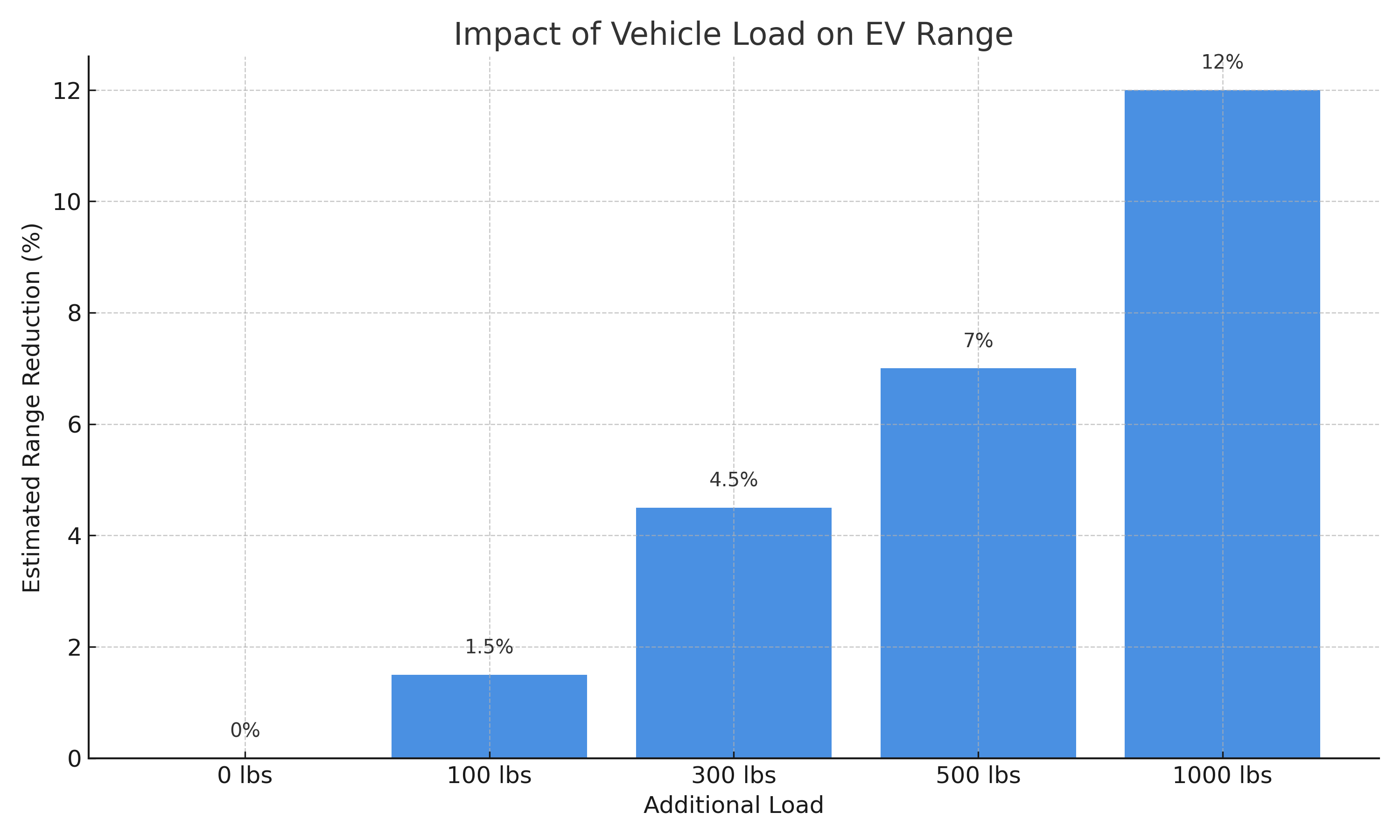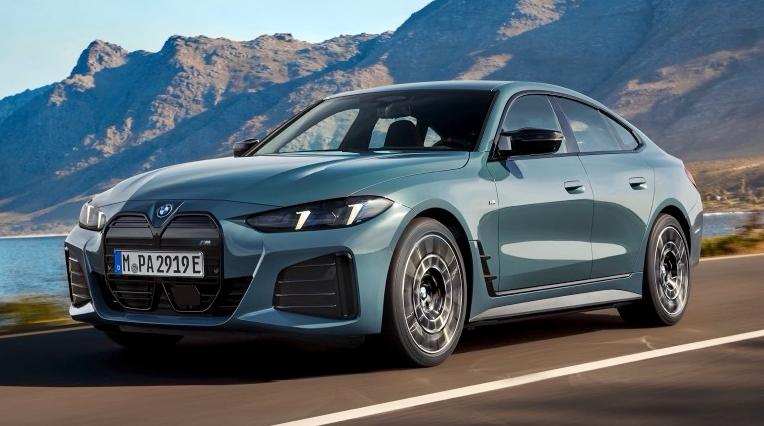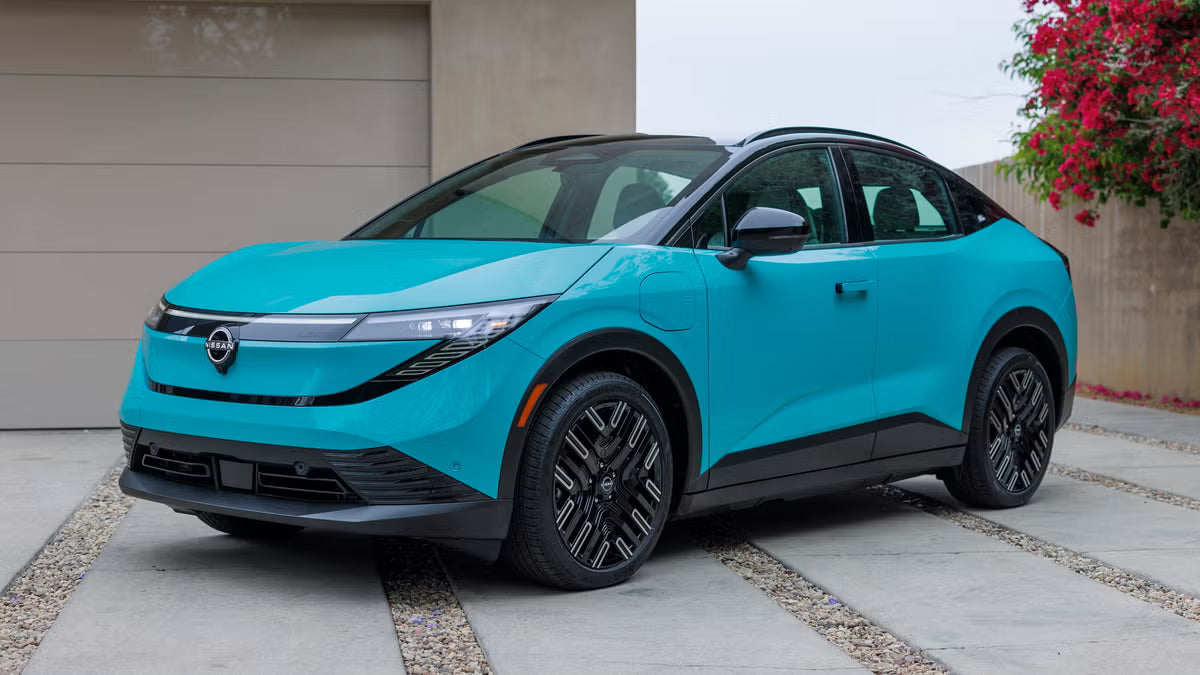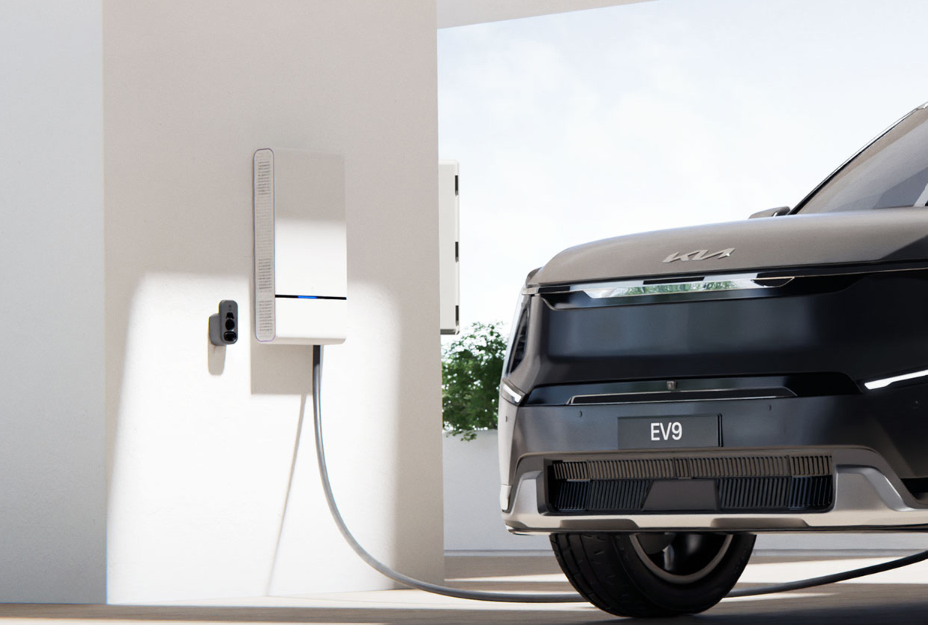Electric vehicles (EVs) are praised for their efficiency, low operating costs, and environmental benefits. However, like all vehicles, their energy consumption is influenced by external factors—one of the most critical being vehicle load. The weight carried by a vehicle, including passengers and cargo, significantly impacts its range. In this article, we explore the relationship between load and range, how EVs manage weight, and what drivers can do to optimize efficiency.
1. What Is Vehicle Load?
Vehicle load refers to the total weight an EV must carry, beyond its own curb weight. This includes:
-
Passengers
-
Cargo or luggage
-
Towing trailers or heavy equipment
-
Roof racks or bike carriers
While gasoline-powered vehicles also lose efficiency under heavier loads, the impact is often more noticeable in EVs due to the way electric drivetrains and regenerative systems work.

2. How Load Affects Energy Consumption
EVs rely on battery-stored energy to power their motors. The more mass the motor must accelerate and maintain in motion, the more power it draws from the battery. This leads to:
-
Increased power demand during acceleration
-
Reduced regenerative braking effectiveness
-
Higher rolling resistance from additional weight
The effect is especially pronounced in stop-and-go driving conditions or on hilly terrain, where the vehicle must exert more energy to regain momentum.

3. Quantifying the Impact: Real-World Data
Tests by EV automakers and independent labs have shown that carrying extra load can significantly reduce range. Here's an example based on an average midsize EV like the Tesla Model Y or Hyundai IONIQ 5:
| Additional Load | Estimated Range Reduction |
|---|---|
| +100 lbs (1 passenger) | ~1-2% |
| +300 lbs (3 passengers) | ~4-5% |
| +500 lbs (5 passengers + cargo) | ~6-8% |
| +1000 lbs (heavy trailer or full load) | 10–15% |
Key Insight: Every 100 lbs of additional weight may reduce range by 1% or more, depending on driving conditions and terrain.

4. EV Models and Load Ratings
Not all EVs respond to load the same way. Heavier vehicles like the Rivian R1T, Ford F-150 Lightning, or Hummer EV have higher load capacities, but they also consume more energy per mile even when unloaded. Lighter EVs like the Chevrolet Bolt EUV or Hyundai Kona Electric are more efficient at baseline but are more sensitive to additional load.
Here’s a quick comparison of typical payload capacities:
| Model | Max Payload Capacity | EPA Rated Range |
|---|---|---|
| Tesla Model Y | ~1,200 lbs | 279–330 miles |
| Ford F-150 Lightning | ~2,000 lbs | 230–320 miles |
| Hyundai IONIQ 5 | ~1,050 lbs | 220–303 miles |
| Rivian R1T | ~1,760 lbs | 270–328 miles |
Heavier load means lower effective range, regardless of capacity.
5. Other Load-Related Factors That Influence Range
1. Roof Racks and Aerodynamics
Adding roof boxes or bikes not only adds weight but increases aerodynamic drag, further reducing range—especially at highway speeds.
2. Tire Pressure
Overloaded vehicles can cause tires to lose pressure, increasing rolling resistance and lowering efficiency.
3. Towing
Towing heavy trailers drastically increases weight and drag. For example, towing a 3,000-lb trailer can reduce range by 40–50% depending on terrain and speed.
6. Battery Management and Load Compensation
Modern EVs are equipped with software that attempts to adjust energy predictions based on detected weight. This includes:
-
Adaptive range estimation using recent driving patterns
-
Tire pressure monitoring systems (TPMS) that flag increased rolling resistance
-
Suspension systems that self-adjust for balance and efficiency (especially in luxury EVs like the Tesla Model S Plaid or Mercedes EQS)
However, these systems inform the driver but don’t eliminate the load impact.
7. Tips to Minimize Load-Related Range Loss
-
Pack Lightly: Avoid storing unnecessary items in your EV’s trunk or frunk.
-
Distribute Weight Evenly: Balanced load improves handling and reduces energy spikes.
-
Avoid Roof Cargo When Possible: Use interior space before adding rooftop carriers.
-
Monitor Tire Pressure: Inflate to manufacturer specifications, especially before long trips.
-
Plan for Charging Stops: If you're traveling with heavy passengers or towing, use apps like PlugShare or ABetterRouteplanner to plan recharges accordingly.
8. When Load Really Matters
Load impact is most critical when:
-
Driving uphill or on mountainous routes
-
Towing, such as with electric trucks or SUVs
-
Carpooling with multiple adults or gear-heavy trips
Conclusion
Understanding how vehicle load affects range is essential for maximizing the performance and efficiency of your electric vehicle. While EVs are increasingly smart about predicting energy use, physics remains unchanged: the more weight you carry, the more energy is required. By adopting smart load management habits, drivers can help preserve battery health, plan more accurately, and enjoy worry-free EV journeys—even when traveling heavy.
Author: Lay Wen
Recommend Reading: 5 Hidden EV Settings That Boost Range








Share:
How Much Does It Cost to Lease a Tesla Model Y in July 2025?
How Fast Charging Affects Your EV Battery Over Time?